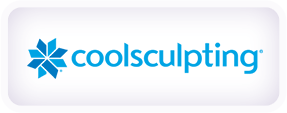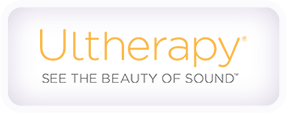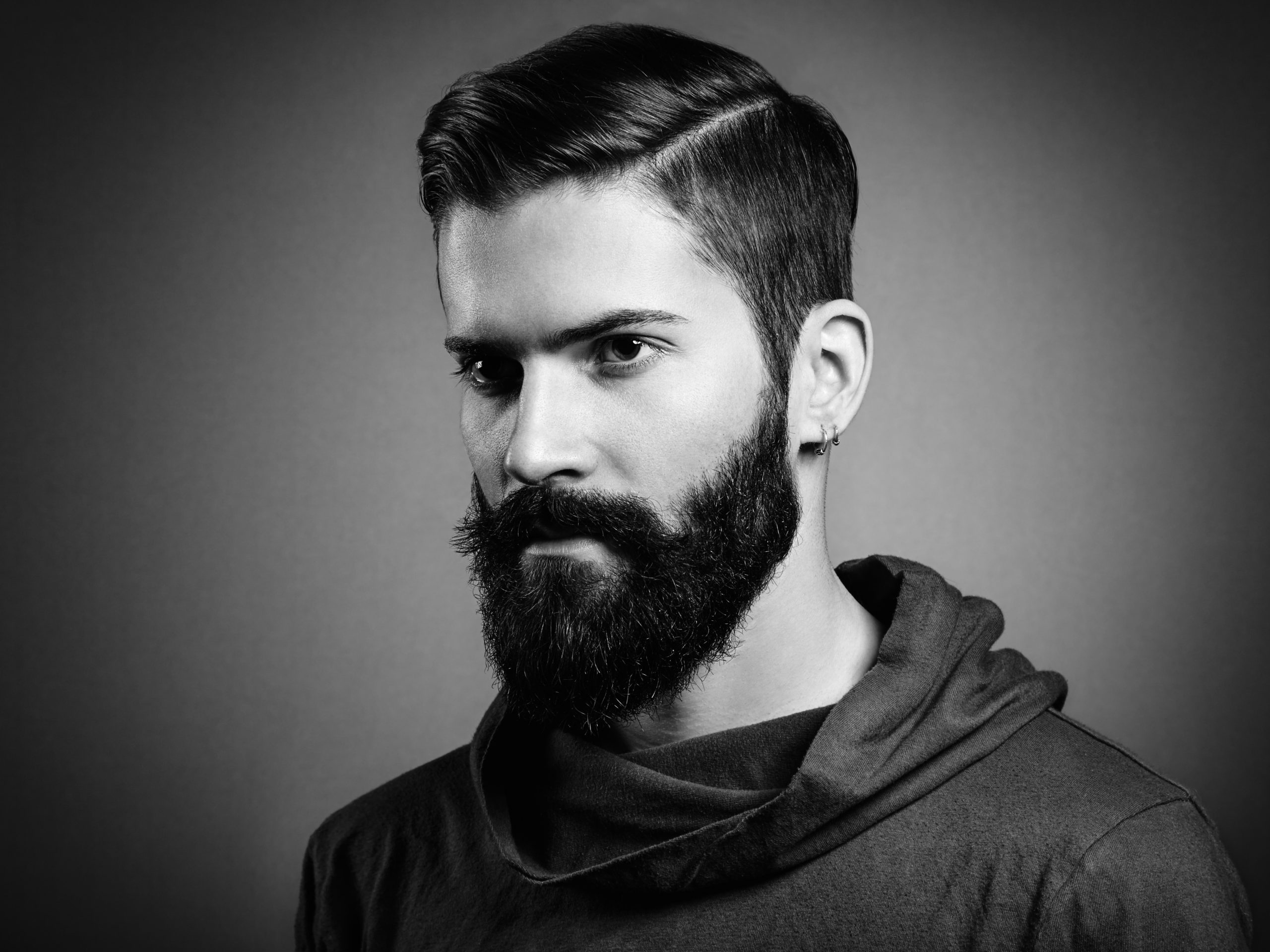 Laser hair removal is becoming more popular for men, offering a solution for unwanted hairs on the body. A growing trend is laser to remove facial hair, especially hair on the neck and cheek area. These men are tired of shaving every morning and dealing with ingrown hairs and razor burn. This also allows them to define a beard style which makes beard maintenance easier. If you would like to eliminate facial hair from certain spots and only allow it to grow in specific areas, then laser hair removal can be an excellent option for you.
Laser hair removal is becoming more popular for men, offering a solution for unwanted hairs on the body. A growing trend is laser to remove facial hair, especially hair on the neck and cheek area. These men are tired of shaving every morning and dealing with ingrown hairs and razor burn. This also allows them to define a beard style which makes beard maintenance easier. If you would like to eliminate facial hair from certain spots and only allow it to grow in specific areas, then laser hair removal can be an excellent option for you.
Procedure:
Before the laser session, you should define your beard/facial hair to your preferred look. Shave your face 12 – 24 hours before the appointment. Avoid tanning and lengthy sun exposure as this can impact the laser’s effectiveness. Discuss with your provider where you would like facial hair to be reduced (expect a big reduction rather than complete removal with laser). The provider will target the hair follicles for removal during the laser session. Full treatment takes 6 – 8 sessions, with appointments once a month.
Benefits:
Many men would like to avoid the razor burn and irritation that comes with shaving. The skin on your face and neck is very sensitive, and when you pass a razor over it you can develop pseudofolliculitis, commonly known as razor bumps. These are inflamed hair follicles that appear as red bumps on the skin. By using laser to remove the hair on the neck/face, you can skip the daily ritual of shaving with a razor. For men who are looking for beard shaping/reduction, this treatment allows them to define the style of their beard. Full beard removal is also possible if you prefer a hairless appearance. Laser hair removal can make your life easier as you no longer have to shave unwanted facial hair on a regular basis.
Read our previous blog about five things to be aware of regarding laser hair removal here.
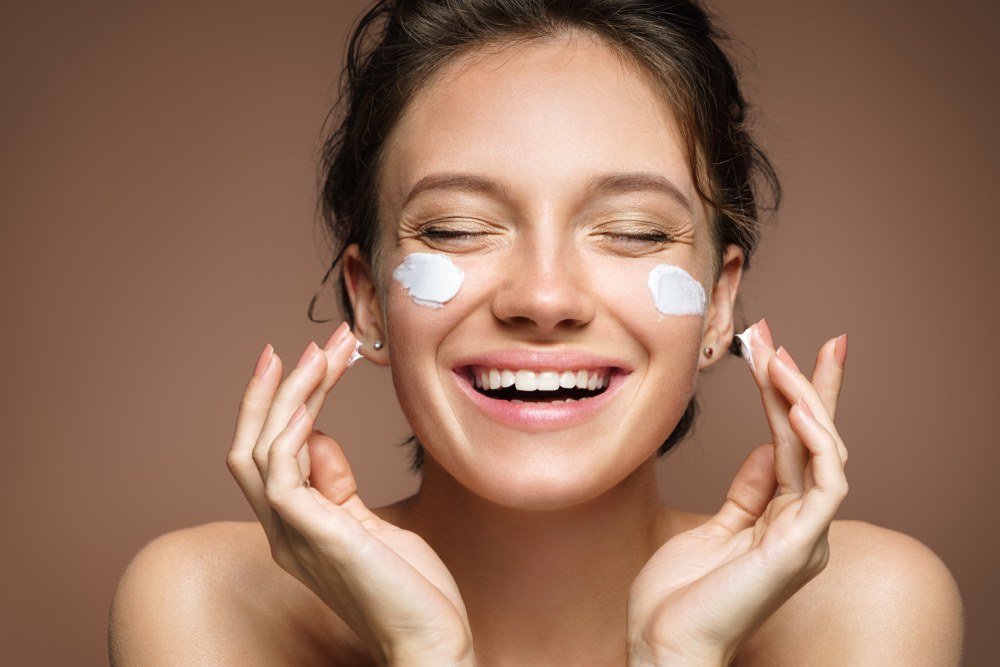
Do you moisturize your face daily? You should, as moisturizing helps keep your skin hydrated and healthy. This is especially important during winter when the humidity is lower. A moisturizer can help you avoid skin problems such as extreme dryness and it can conceal blemishes through adding a shiny sheen to your face. It works by sealing moisture into the outer layer of skin and by pulling moisture from the inner layers of skin to the outer. There are many moisturizers on the market, making it tricky to decide which works best for you. Here are factors to consider when choosing a moisturizer.
Skin type:
If you have normal skin (neither oily nor dry), look for an oil-free moisturizer that is light and non-greasy. If you have dry skin, look for a thicker moisturizer and make sure it absorbs into the skin rather than sitting on the face. As for people with oily skin, they should still use a daily moisturizer. Look for a light, oil-free moisturizer that is noncomedogenic (which means not pore-clogging).
Essential vitamins:
You should look for moisturizers with Vitamins A, B5, E, and C in particular. Vitamin A is an anti-aging chemical that boosts collagen production to keep skin supple and healthy. Vitamin B5 moistens, soothes and heals the skin. As for vitamin E, it’s an anti-oxidant which protects the skin from damage as well as providing moisturizing and healing benefits. Vitamin C is also an anti-oxidant that helps brighten and tighten the skin. It also acts as a mild exfoliator and can help fade dark spots.
SPF benefits:
Since sunscreen should be applied daily, moisturizers with SPF can make your daily routine easier. These hybrid products offer hydration for the skin as well as defense from harmful UV rays. Look for a broad spectrum moisturizer with an SPF 15 or higher to get a 2-in-1 benefit for your skin.
Ingredients to avoid:
You should avoid facial moisturizers with fragrances, harsh acidic components, steroidal ingredients, and ones that are body-specific (don’t use body moisturizer on your face).
Read our blog post on the benefits of vitamin A for skincare here.
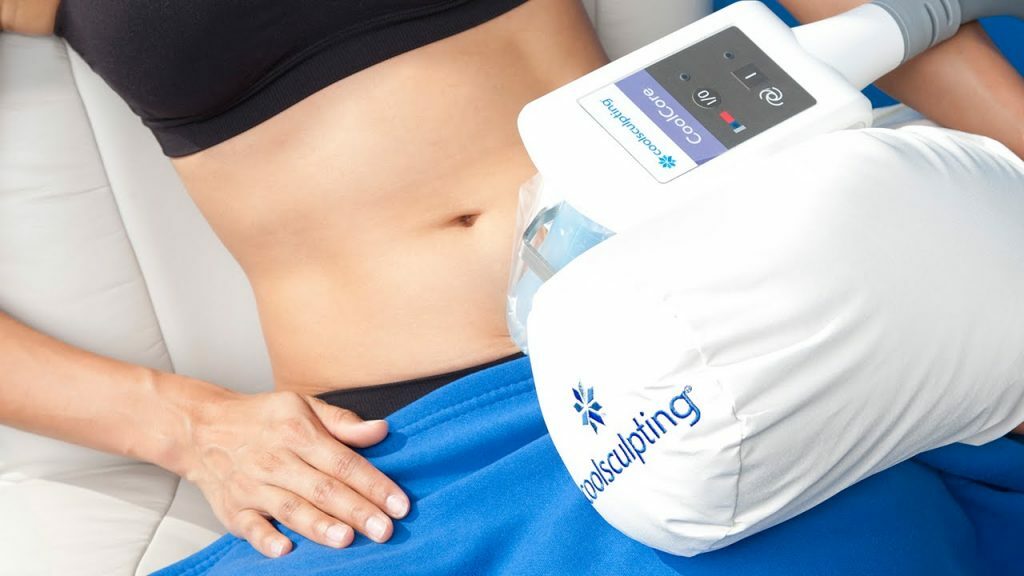 Choosing to go undergo surgery for fat reduction is a big decision. Procedures can be expensive, take many hours to complete, and require weeks of aftercare. For these reasons, many patients are now seeking non-surgical methods to lose fat. Fat removal machines can offer great results for certain patients based on doctor evaluation. CoolSculpting is a fat freezing technique to remove pockets of fat from stubborn areas of the body. Another common procedure is SculpSure, which uses laser technology to melt fat cells.
Choosing to go undergo surgery for fat reduction is a big decision. Procedures can be expensive, take many hours to complete, and require weeks of aftercare. For these reasons, many patients are now seeking non-surgical methods to lose fat. Fat removal machines can offer great results for certain patients based on doctor evaluation. CoolSculpting is a fat freezing technique to remove pockets of fat from stubborn areas of the body. Another common procedure is SculpSure, which uses laser technology to melt fat cells.
There are many benefits to these treatments. One is convenience, as the patient doesn’t need to take time off work for surgery. The procedures are office-based and there is little downtime. They are also quick to execute: CoolSculpting takes 35 minutes for each region and removes about 20-30% of the fat in that area. The patient might have fear of going under the knife, which makes non-invasive options more attractive. They have less pain and complications compared to surgeries, which is also reassuring to the patient. Cost is another factor, as surgery tends to be more expensive.
However, surgeries are more effective and treat a larger area in one day. Procedures such as CoolSculpting usually take multiple sessions. Sometimes patients are not suited to these treatments, making surgery the best option. CoolSculpting is designed for relatively fit rather than obese patients. Obese individuals should consider exercise, diet changes, and surgical procedures for weight loss. Patients can also have unrealistic expectations: non-invasive treatments typically don’t result in drastic changes.
Summary:
Fat reduction machines are growing in popularity as they offer fast and easy options to contour the body. If you are looking to avoid surgery, these treatments can give you results you’re happy with at a lower cost. In either case, the patient should follow a healthy and active lifestyle. Consult with your doctor to see if non-surgical treatments are suitable for your fat reduction goals.
Read our blog about whether patients with obesity should seek plastic surgery here.
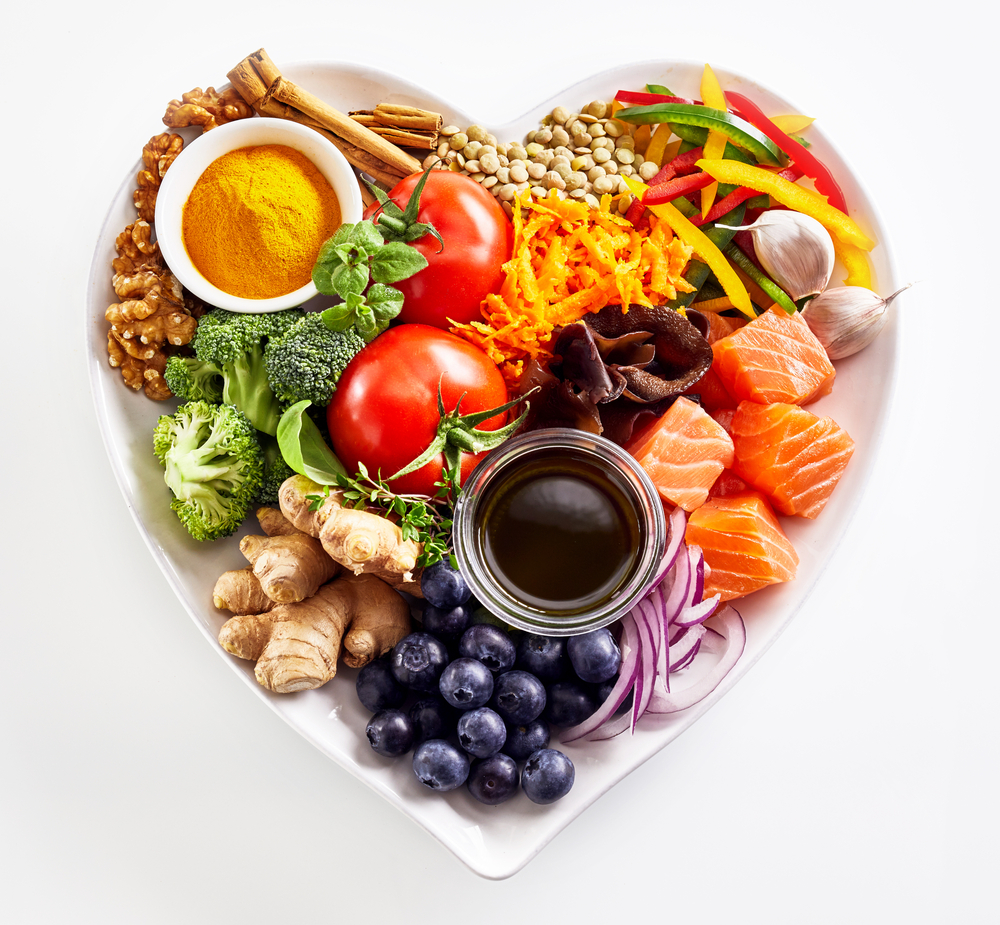
Maintaining a radiant appearance is about more than just your daily skincare routine. Healthy skin starts from within, as the foods you ingest play an important role in your skin’s health. Here are 10 foods that provide essential vitamins and nutrients, and can be great additions to your diet:
1) Fatty fish:
Fatty fish, such as salmon and herring, are rich sources of omega-3 fatty acids. These fatty acids keep the skin thick and moisturized, as well as reducing inflammation that can cause acne. They are also a great source of vitamin E, an antioxidant for the skin, and protein, which maintains the skin’s strength. They are also a reliable source of zinc, which is an important mineral for cell regulation. Zinc deficiency can lead to skin inflammation and delayed wound healing.
2) Avocados:
Avocados are high in healthy fats, which keep skin supple and moisture. They are also a great source of vitamin E and vitamin C. Vitamin C is vital for creating collagen, and is also a strong antioxidant. Some evidence suggests that avocados can also protect the skin from sun damage.
3) Walnuts:
Richer than other nuts in omega-3 and omega-6 fatty acids, that the body can’t produce itself. A diet too high in omega-6 can promote inflammation, however omega-3 reduces inflammation in the body and skin. Walnuts have a good ratio between these two fatty acids. Walnuts also contain zinc, which is vital to the skin’s function as a barrier.
4) Sweet Potatoes:
Sweet potatoes are a great source of beta-carotene, which is a type of provitamin A (converted to vitamin A in the body). This antioxidant can protect skin cells from sun exposure and help maintain a youthful appearance. Read more about the benefits of vitamin A in our previous blogpost here.
5) Broccoli:
Broccoli is a highly nutritious vegetable that is a great source of zinc, vitamin A and vitamin C. It also contains lutein, which protects the skin from oxidative stress, and sulforaphane, which protects the skin from sun damage. Some studies suggest that sulforaphane can also help prevent skin cancer.
6) Tomatoes:
Tomatoes are a great source of vitamin C as well as beta-carotene, lutein and lycopene. These nutrients protect the skin from sun exposure and can help prevent wrinkling. Lycopene in particular is a powerful antioxidant that enhances skin elasticity, lowers inflammation and reduces signs of aging.
7) Leafy Vegetables:
Leafy green vegetables are highly nutritious and have a range of benefits that lead to healthy skin. They are rich in minerals such as iron, potassium, and calcium and vitamins such as E, K and C. They are one of the best sources of lutein, which can help reduce wrinkles as well as lower the rate of cancer. Some of the best leafy vegetables include kale, spinach and collard greens.
8) Berries:
Blueberries, strawberries and raspberries are delicious and excellent for your skin. These berries are loaded with antioxidants and can help protect your skin from sun exposure. If you suffer from redness due to sensitive skin, blueberries can help as they are vascular constrictors. Strawberries and raspberries can boost the production of collagen which keeps the skin elastic.
9) Green Tea:
Green tea is one of the best sources of antioxidants. It is especially high in polyphenols, which are antioxidants that can fight diabetes, insulin resistance, and heart disease. These polyphenols can also protect collagen, which is the main protein found in the skin. Green tea can also be used to fight acne, as it has anti-microbial properties which can destroy bacteria that cause acne.
10) Dark chocolate:
Not all chocolate is created equal. Dark chocolate is mostly cocoa solids with no added milk, and it is a healthier choice than white chocolate or milk chocolate. Dark chocolate is a rich of source of anti-oxidants and minerals, protects from sun damage and prevents premature aging. It can also reduce dark spots and pigmentation as well as promoting cell growth.
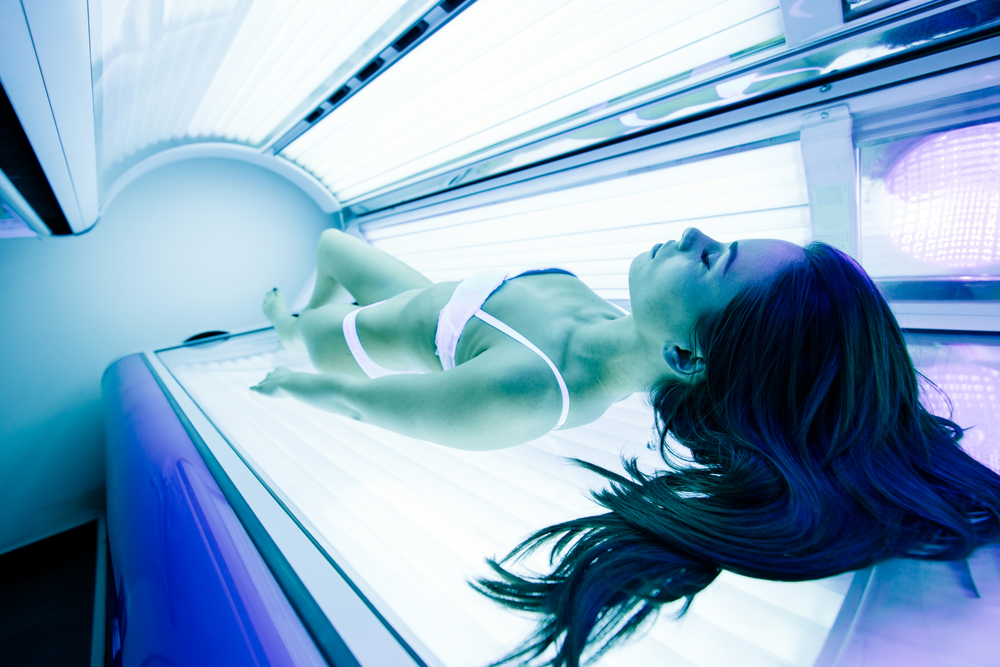 During the summer, beaches and tanning salons are filled with people looking to tan their skin. Many assume this is a safe activity, but skin tanning can expose you to multiple hazards. When ultraviolet rays reach unprotected skin, compounds called melanocytes are produced, which lead to a darker pigment on the skin. While tanning, these ultraviolet rays can cause sunburns, photoaging, skin cancer and eye damage. There is no safe way to tan, as sun exposure is inherently risky. Below are four risks of skin tanning along with general advice.
During the summer, beaches and tanning salons are filled with people looking to tan their skin. Many assume this is a safe activity, but skin tanning can expose you to multiple hazards. When ultraviolet rays reach unprotected skin, compounds called melanocytes are produced, which lead to a darker pigment on the skin. While tanning, these ultraviolet rays can cause sunburns, photoaging, skin cancer and eye damage. There is no safe way to tan, as sun exposure is inherently risky. Below are four risks of skin tanning along with general advice.
Sunburn:
Redness and peeling of the skin are the main symptoms of sunburn. The cause of sunburn is UV rays damaging the epidermis, which is the outer layer of skin. The immune system increases blood flow to this area, which leads to a reddened appearance. Sunburns should be treated with cool bathes, moisturizer, and a painkiller to reduce pain and swelling.
Photoaging:
Photoaging, also known as premature aging, is indicated by wrinkled skin and dark spots. It can also be indicated by appearance of thin blood vessels on the skin (telangiectasia) and rough, scaly patches on the skin (actinic keratosis). Unprotected sun exposure is the main cause of photoaging. UV rays break down the collagen and elastin fibers of the skin, which leads to wrinkles and an older appearance. Frequent sunburns or tanning sessions can lead to a permanent darkening of the skin. To treat photoaging, several options are available, such as chemical peels, microdermabrasion and skin fillers.
Skin cancer:
Melanoma and non-melanoma are the two main types of skin cancer. Melanoma is less common but more dangerous. This cancer forms in the epidermal cells that produce melanin. Early stages of melanoma are curable, however if the cancer spreads it becomes harder to treat and potentially fatal. Non-melanoma occurs in basal cells at the base of the epidermis. These develop in sun-exposed regions of the body such as the face, ears and hands. Treatment depends on the area and severity; consult a doctor for a treatment plan suitable to your condition.
Eye damage:
Eye damage, also known as photokeratitis, is damage to the cornea due to intense UV exposure. Sun tanning exposes the eyes to this risk, as well as artificial UV sources such as tanning lamps. Symptoms include tearing, pain, swollen eyelids, and hazy or weaker vision. If you display any of these symptoms, consult your doctor for a topical healing solution. The cornea typically heals in 24 to 48 hours, so the symptoms are not long-term.
Advice:
While tanning should be avoided, precautions should be taken if you choose to tan your skin. Always make sure you wear a broad spectrum sunscreen and avoid the sun between 10 am and 2pm. If you are using tanning equipment, make sure you visit a reputable facility and read the warning labels on the machine. Talk with the salon operator to determine the best length for your tanning session according to your skin’s needs. Do not exceed this limit. Wear the safety eyewear and report side effects to the salon operator. Remember that the less UV exposure, the better for your skin’s health.
Read our previous blog about the benefits of sunscreen here.
 Laser hair removal is becoming more popular for men, offering a solution for unwanted hairs on the body. A growing trend is laser to remove facial hair, especially hair on the neck and cheek area. These men are tired of shaving every morning and dealing with ingrown hairs and razor burn. This also allows them to define a beard style which makes beard maintenance easier. If you would like to eliminate facial hair from certain spots and only allow it to grow in specific areas, then laser hair removal can be an excellent option for you.
Laser hair removal is becoming more popular for men, offering a solution for unwanted hairs on the body. A growing trend is laser to remove facial hair, especially hair on the neck and cheek area. These men are tired of shaving every morning and dealing with ingrown hairs and razor burn. This also allows them to define a beard style which makes beard maintenance easier. If you would like to eliminate facial hair from certain spots and only allow it to grow in specific areas, then laser hair removal can be an excellent option for you.


 Choosing to go undergo surgery for fat reduction is a big decision. Procedures can be expensive, take many hours to complete, and require weeks of aftercare. For these reasons, many patients are now seeking non-surgical methods to lose fat. Fat removal machines can offer great results for certain patients based on doctor evaluation.
Choosing to go undergo surgery for fat reduction is a big decision. Procedures can be expensive, take many hours to complete, and require weeks of aftercare. For these reasons, many patients are now seeking non-surgical methods to lose fat. Fat removal machines can offer great results for certain patients based on doctor evaluation. 
 During the summer, beaches and tanning salons are filled with people looking to tan their skin. Many assume this is a safe activity, but skin tanning can expose you to multiple hazards. When ultraviolet rays reach unprotected skin, compounds called melanocytes are produced, which lead to a darker pigment on the skin. While tanning, these ultraviolet rays can cause sunburns, photoaging, skin cancer and eye damage. There is no safe way to tan, as sun exposure is inherently risky. Below are four risks of skin tanning along with general advice.
During the summer, beaches and tanning salons are filled with people looking to tan their skin. Many assume this is a safe activity, but skin tanning can expose you to multiple hazards. When ultraviolet rays reach unprotected skin, compounds called melanocytes are produced, which lead to a darker pigment on the skin. While tanning, these ultraviolet rays can cause sunburns, photoaging, skin cancer and eye damage. There is no safe way to tan, as sun exposure is inherently risky. Below are four risks of skin tanning along with general advice.

